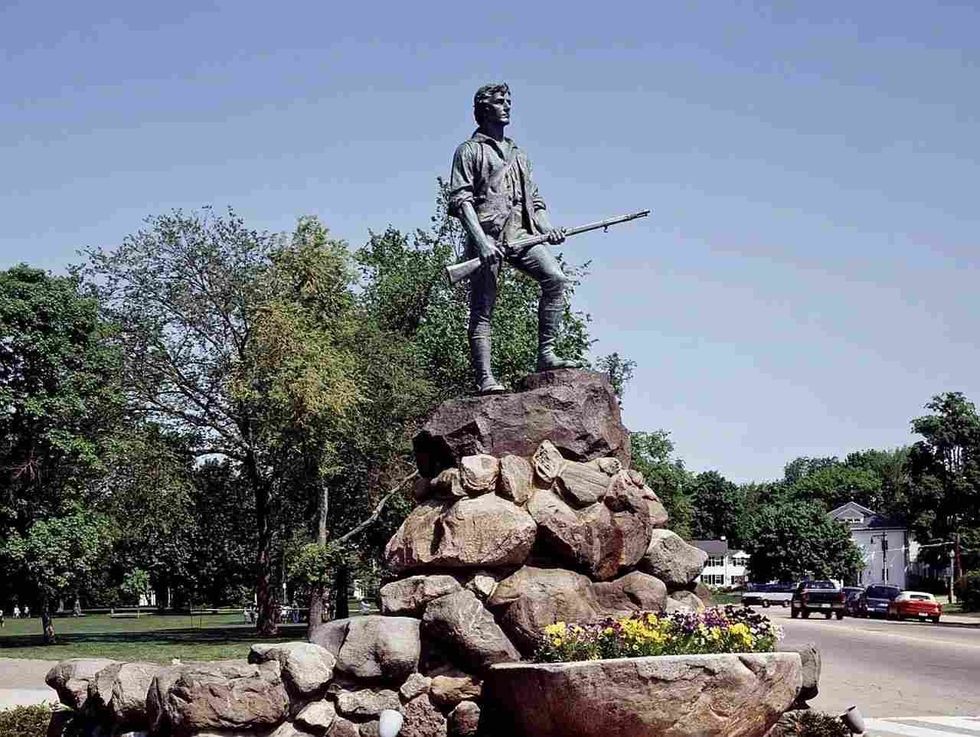Benjamin Banneker Astronomy Facts
Benjamin Banneker could see astronomical patterns from which he could make calculations and predictions. Benjamin Banneker was considered one of the most intelligent scientists because he was the first African American who gained distinction in Science.
The critical fact is that he was largely self-taught and learned from borrowed textbooks. Banneker helped Joseph Ellicot, another famous Marylander, in building a complex clock during which they became friends. Joseph Ellicot was an amateur mathematician and astronomer. He lent his books on astronomy and mathematics to Benjamin and instruments required to observe the stars.
Banneker got encouragement from George Ellicot for the study of astronomy. George Ellicot was a Quaker and amateur astronomer.
He comes from a wealthy family who were the owners of nearby mills. Banneker's interest deepened in astronomy such that not only did he begin to make astronomical calculations, but he was also able to predict a solar eclipse that occurred in 1789 with utmost accuracy.
Along with Andrew Ellicott and others, he was surveying the land that later became Washington, D.C. The survey was recommended to him by Thomas Jefferson.
At that time also he was consistently making other astronomical observations. Banneker was chosen by President George Washington to assist Major L'Enfant, a French architect, to put forth the plan of the layout of the district of Columbia. Banneker , L’Enfant, and George Ellicott were the survey’s commissioners.
Almanacs were Benjamin's commercial success that spread his fame. Almanac included medical information, listed tides, astronomical information, and accurate eclipses that Banneker had calculated. Thomas Jefferson, the then secretary of state, received the first copy of the almanac from Banneker.
Inspirational Facts About Benjamin Banneker
The accomplishments of Benjamin Banneker are very inspirational, especially for the youth. There is a United States postage stamp in his honor.
Also, several cultural and recreational facilities, streets, schools, and many other such institutions throughout the country have commemorated Banneker's well-documented and mythical accomplishments during the two complete centuries since he lived.
Benjamin always dreamt of a society free from slavery and racism. He wanted the secretary of state Thomas Jefferson to consider his beliefs. His prestigious almanac is an excellent reminder that showed us what black people could accomplish if they were free from slavery.
Even though Jefferson liked his initiatives, he did not end slavery, for which Banneker was brave enough to call him a hypocrite. Benjamin Banneker's life spills such facts that must inspire each one of us. His just beliefs and outspoken quality especially.
Benjamin Banneker was a free African American almanac author, surveyor, landowner, and farmer with an arithmetic and natural history background.
Banneker was self-taught and had little or no official schooling when he was born in Baltimore County, Maryland, to a free African American lady and a former slave. He rose to prominence after assisting Major Andrew Ellicott in a survey that defined the original boundaries of the District of Columbia, the United States' federal capital district.
When slavery was predominant in society, a great mind named Benjamin was born on November 9, 1731, in Banneky farm (now in Oella), Maryland.
After leaving the federal capital area on August 19, 1791, Banneker addressed a letter to Thomas Jefferson, who had penned the United States Declaration of Independence in 1776 and served as Secretary of State in 1791. The letter emphasized a request for justice for African Americans by quoting wording from the Declaration of Independence.
Benjamin was one of the most intellectual African Americans who is best known for his astronomical almanac. Benjamin Banneker was born on November 9, 1731.
Benjamin Banneker Died on October 19, 1806, at the age of 74. In 1788, Banneker was given books and equipment by George Ellicott, son of Andrew Ellicott (from the Ellicott family), to undertake a more formal study of astronomy.
Banneker sent George his work on calculating a solar eclipse the following year. Banneker gave a manuscript containing his ephemeris to William Goddard, a Baltimore printer who had produced Since 1782, the Pennsylvania, Delaware, Maryland, and Virginia Almanack and Ephemeris has been published every year, after securing the support of Pemberton, Rittenhouse, and Waring.
Banneker's work was then included in an almanac and ephemeris for 1792, which Goddard consented to publish and distribute.
According to later biographers, Banneker's mother was the child of Molly Welsh, a former white indentured servant, and Banneker, an African slave. Molly Welsh's first published description was based on interviews with her ancestors conducted in 1836, long after Molly Welsh and Benjamin died.
According to the story, Molly bought Banneka to help build a farm at the future site of Ellicott's Mills, Maryland, west of Baltimore. When he was six years old, Banneker was named on the deed of his family's Banneker's farm, a 100-acre (40.5 ha) farm in rural Baltimore County's Patapsco Valley.
According to a letter writer in 1791, Banneker's parents sent him to an inconspicuous school where he learned reading, writing, and arithmetic up to double position.
However, little is known about the rest of Banneker's early life. Banneker lived with his mother and sisters after his father died in 1759.
He signed a petition in Baltimore County in 1768 to relocate the county seat from Joppa to Baltimore. Banneker was listed as the lone adult member of his household in a 1773 Baltimore County tax list for his land.
Pemberton then enlisted the help of William Waring, a Philadelphia mathematician and ephemeris calculator, and David Rittenhouse, a prominent American astronomer, almanac author, surveyor, and scientific instrument maker.
In 1791, U.S. Secretary of State Thomas Jefferson commissioned surveyor Major Andrew Ellicott to study a proposed new federal district.
Ellicott left a surveying team he had been commanding in western New York in February 1791 to start the district's survey. Ellicott then hired Banneker as a substitute to help with the initial survey of the federal district's boundaries, providing him with a $60 stipend to cover his travel expenses to and from Georgetown.
The editors of the almanacs prefaced the books with adoring tributes to Banneker and his African race.
In editions of Banneker's 1792 and 1793 almanacs, there are copies of a lengthy commendatory letter written to Goddard and his partner, James Angell, in August 1791 to support the almanac's publication by James McHenry, Secretary of 1787 the United States Constitutional Convention and self-described friend of Banneker.
A copy of Jefferson's letter to Banneker, dated August 30, 1791, can be seen in the Library of Congress.
Jefferson Wrote a letter copying press constructed by James Watt & Co. to create this paper before sending his reply to Banneker. He kept the original in his files.
Andrew Ellicott hired Banneker to perform the astronomical calculations required to determine the location of the south cornerstone, while Ellicott and the field workers completed the actual surveying.
To bolster his case, Banneker included a handwritten draught of an almanac for 1792, which included his ephemeris and astronomical computations. In a volume of manuscripts that formed part of a journal, he kept a copy of the letter and Jefferson's reply dated August 30, 1791.
Saturn, the ruler of time in zodiac terms, was transiting its home sign of Capricorn when Banneker was born. This is why it may not surprise us that he could hand-carve a striking wooden clock after seeing just two other timepieces.
Not just that, the clock was so accurate and well-made that it worked for 40 years.
Following the publication of Goddard and Angell's 1792 Baltimore edition of the almanac, Angell claimed that the 1792 edition was introduced into the British House of Commons by abolitionists William Pitt, Charles James Fox, and William Wilberforce to aid their efforts to halt the British slave trade in Africa.
However, neither Banneker nor his almanac was mentioned in the British Parliament's report on the debate that surrounded this attempt. Banneker's 1792 almanac included an excerpt from an anonymous essay published in the Columbian Magazine in 1790 titled 'On Negro Slavery and the Slave Trade.'
An exhaustive search of the files under Public Buildings of the U.S. National Archives and many collections in the Library of Congress have proved useless.
Here at Kidadl, we have carefully created many interesting family-friendly facts for everyone to enjoy! If you liked our suggestions for Benjamin Banneker facts, then why not take a look at ancient Greek astronomy facts or Benjamin Britten facts?









